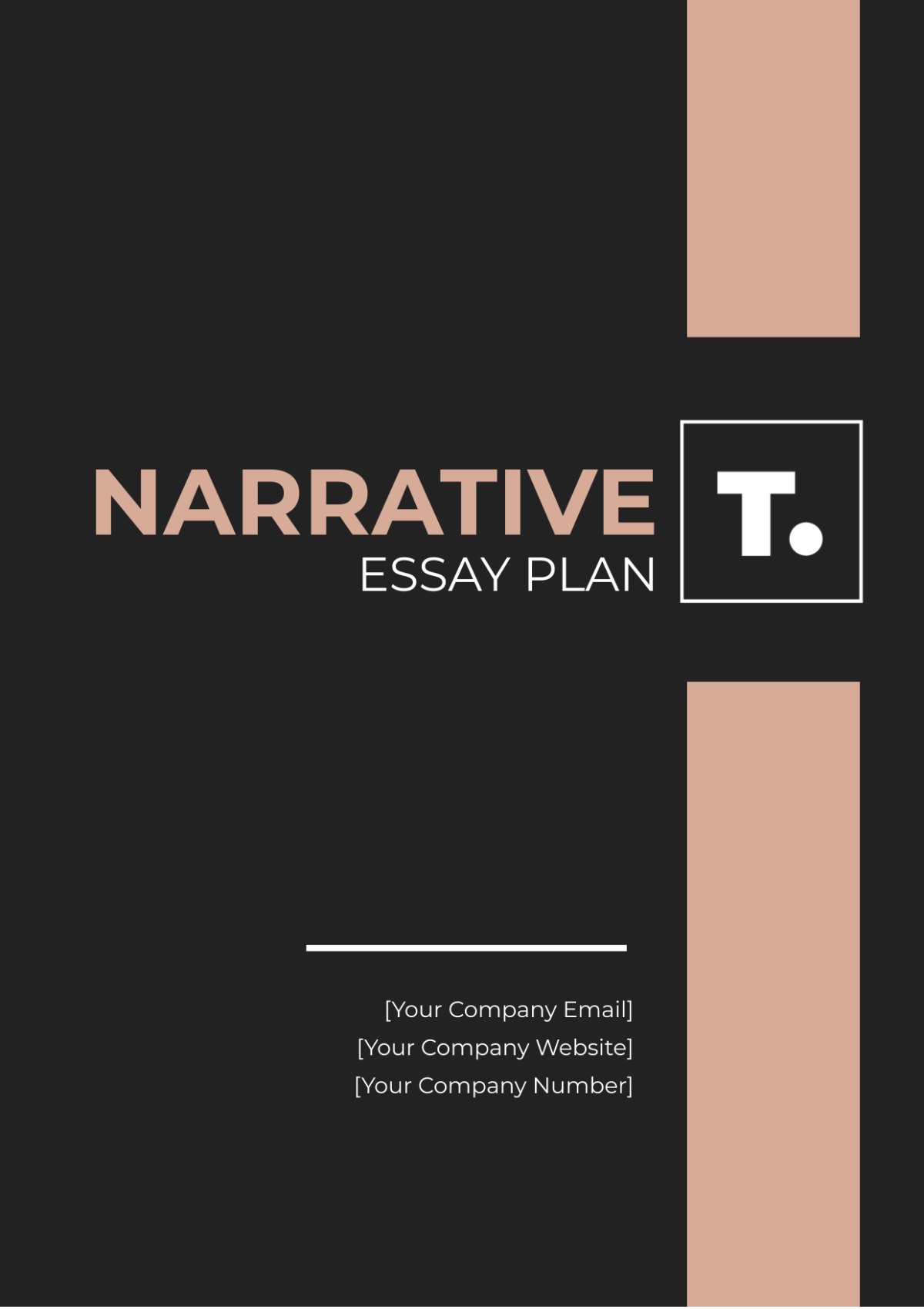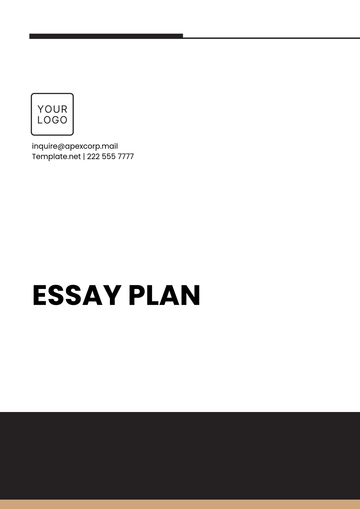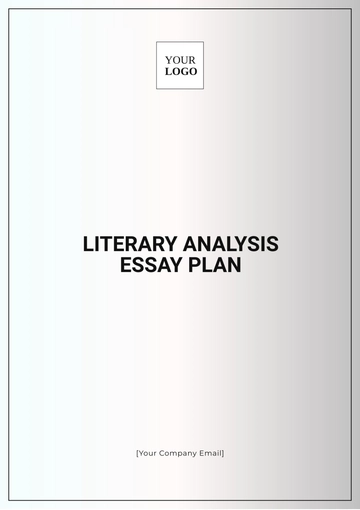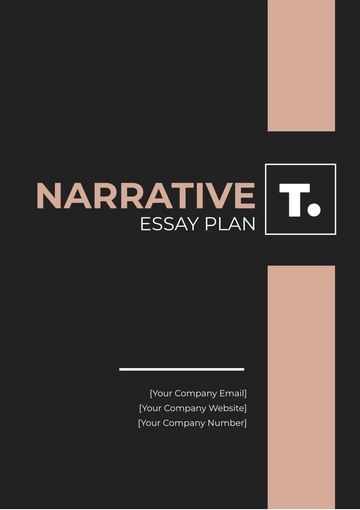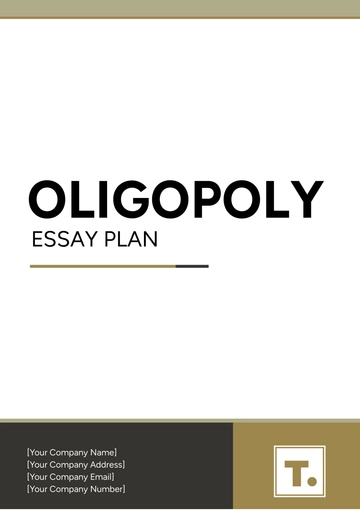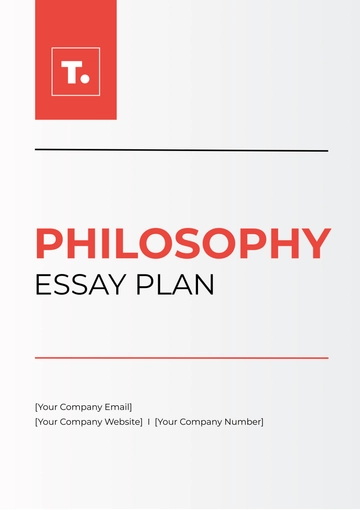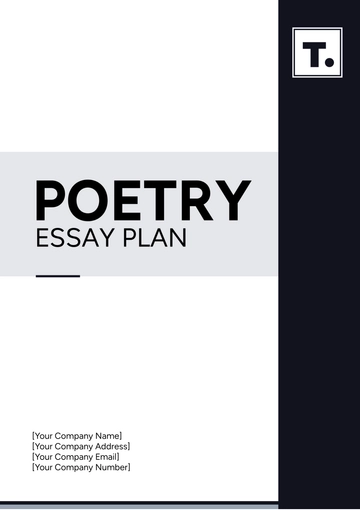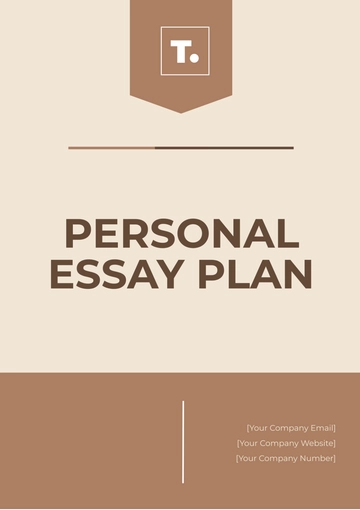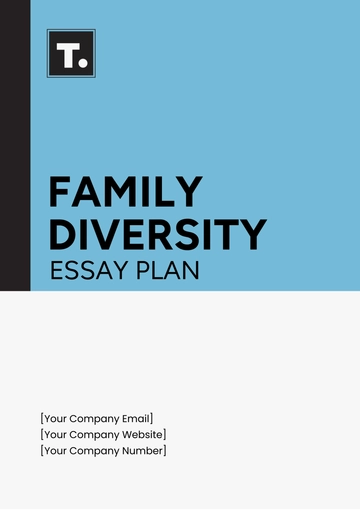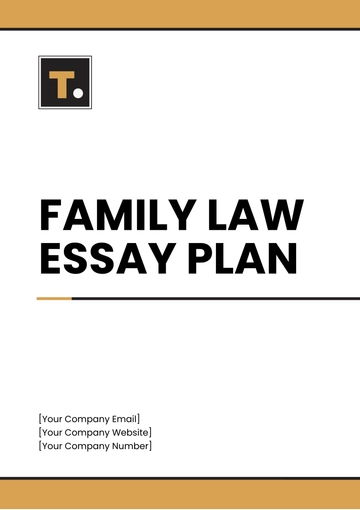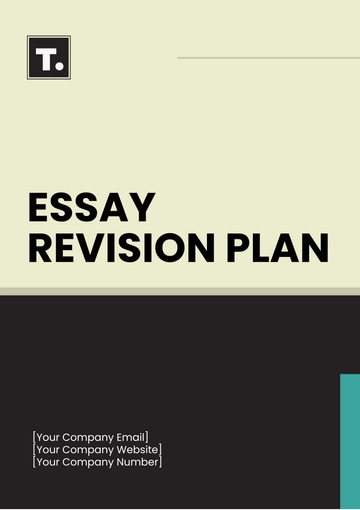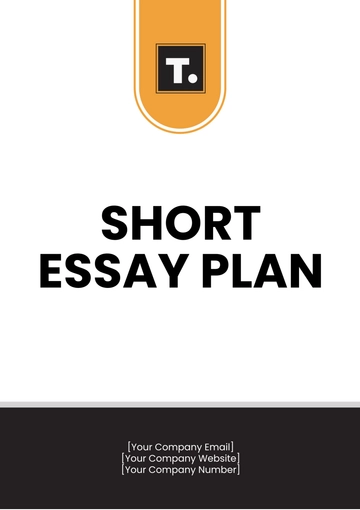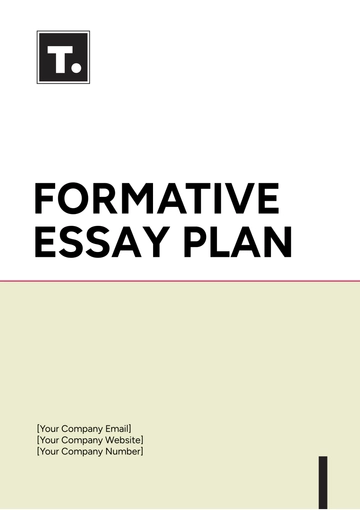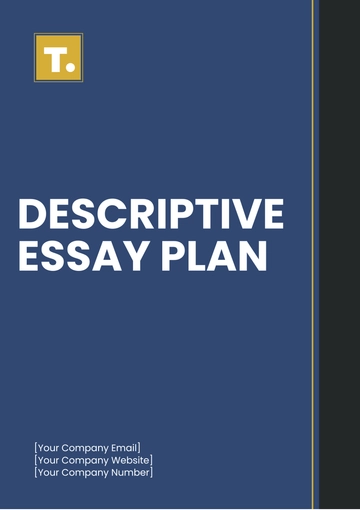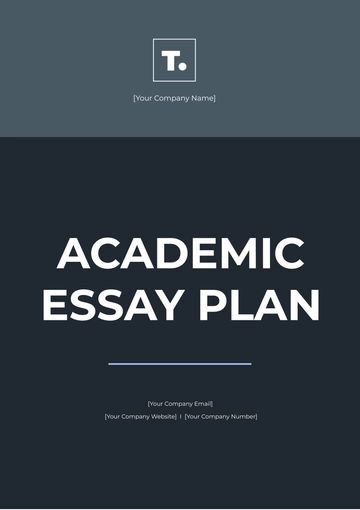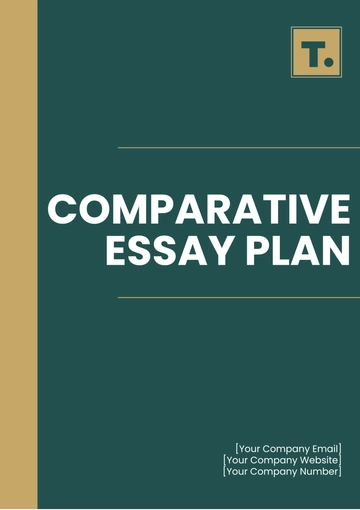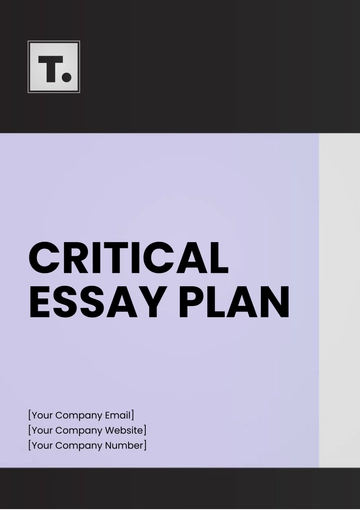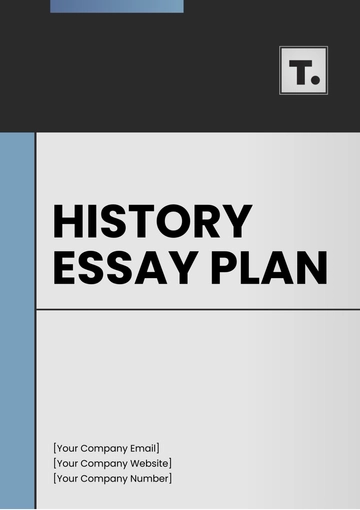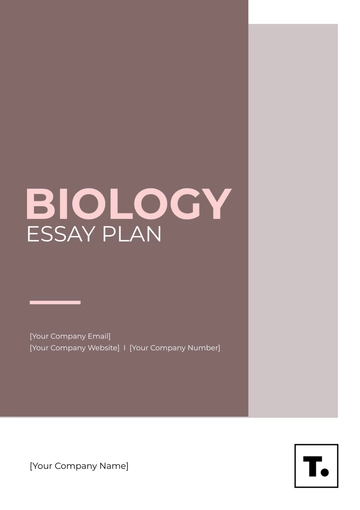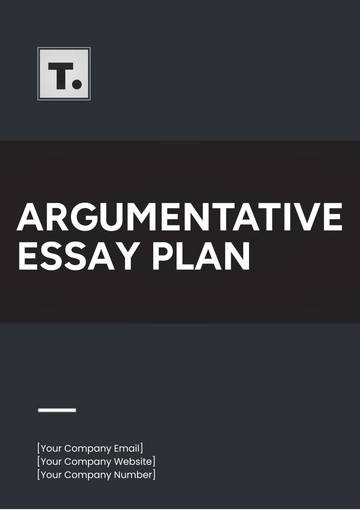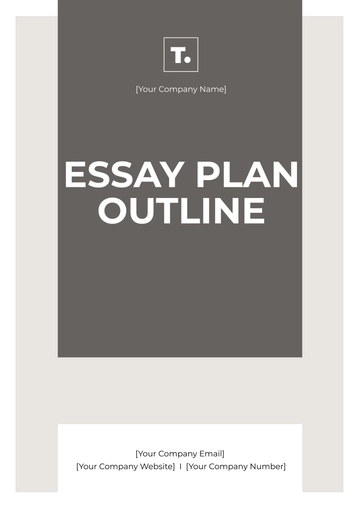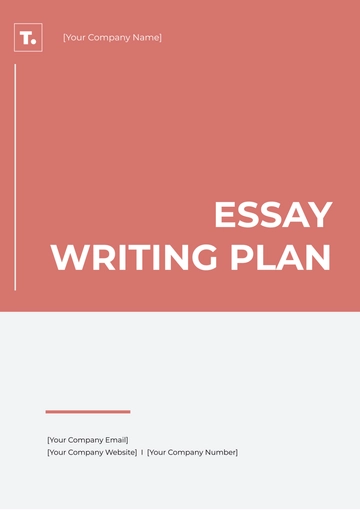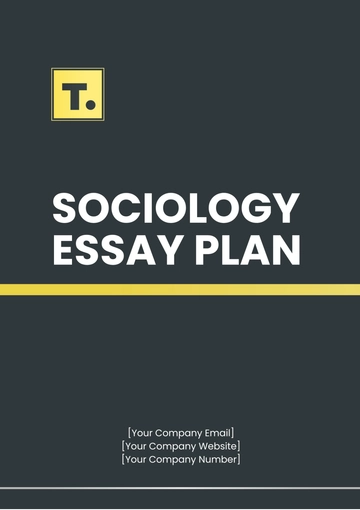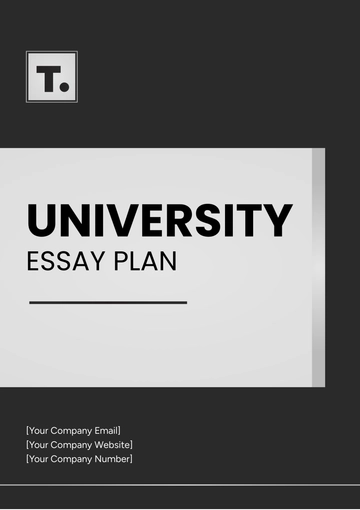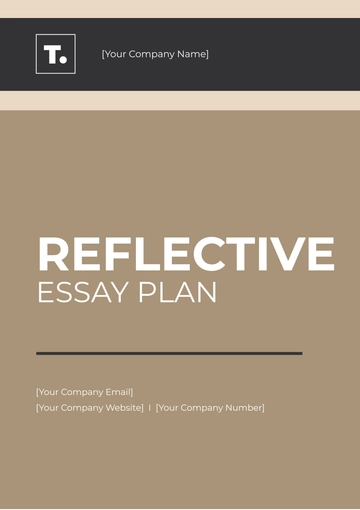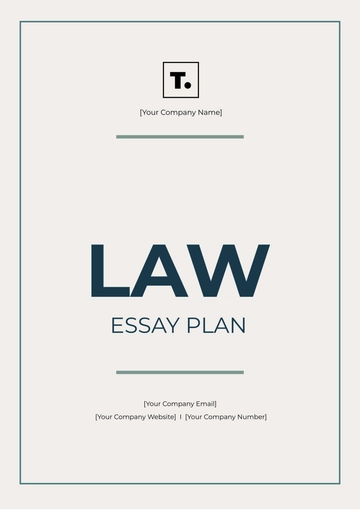Narrative Essay Plan
I. Introduction
Name: [YOUR NAME]
Course Title: [COURSE TITLE]
Instructor's Name: [INSTRUCTOR'S NAME]
Due Date: June 15, 2050
Hook: [AN ENGAGING STARTER TO CAPTURE INTEREST] - This could be a question, a bold statement, or an intriguing scenario.
Thesis Statement: [THESIS STATEMENT] - A brief statement that sets up the narrative’s purpose and the main message you aim to convey.
II. Setting and Characters
Setting:
Location: [PLACE OR ENVIRONMENT]
Period: [DECADE, SEASON, OR TIME OF DAY]
Main Characters:
III. Plot Development
Plot Table:
Story Stage | Event Description | Impact on Story |
|---|
Inciting Incident | [EVENT THAT SETS THE STORY IN MOTION] | Sets up the initial conflict or challenge. |
Rising Action | [KEY DEVELOPMENTS LEADING TO THE CLIMAX] | Builds tension and develops the main issue. |
Climax | [THE TURNING POINT OF THE STORY] | The peak of the story's tension and conflict. |
Falling Action | [EVENTS POST-CLIMAX LEADING TO RESOLUTION] | Begins to resolve the story’s conflicts. |
Resolution | [HOW THE STORY CONCLUDES] | Wraps up the narrative, resolving conflicts and revealing outcomes. |
IV. Conflict and Resolution
Conflict Description: Describe the central conflict or challenge faced by the protagonist.
Type of Conflict: [INTERNAL/EXTERNAL CONFLICT DESCRIPTION]
Resolution Strategy: [HOW THE PROTAGONIST RESOLVES THE CONFLICT]
V. Themes and Lessons
Themes and Lessons Table:
Theme/Message | Details | Lessons Learned |
|---|
[FIRST MAJOR THEME] | [DETAILS ABOUT HOW THIS THEME IS EXPLORED] | [WHAT LESSONS THE PROTAGONIST LEARNS] |
[SECOND MAJOR THEME] | [ADDITIONAL THEMATIC DETAILS] | [INSIGHTS GAINED OR MORAL OF THE STORY] |
VI. Dialogue and Interaction
Dialogue Highlights: Key conversations or interactions that advance the plot or develop characters.
Important Dialogue: [SIGNIFICANT QUOTE OR EXCHANGE]
Character Interaction: [HOW INTERACTIONS INFLUENCE CHARACTER DEVELOPMENT OR PLOT]
VII. Conclusion
Summary: Brief recap of the narrative, emphasizing the climax and resolution.
Reflective Insight: Reflect on the broader significance of the story’s themes and lessons.
Closing Thought: Leave the reader with a poignant thought or question that reinforces the narrative’s message.
Plan Templates @ Template.net
